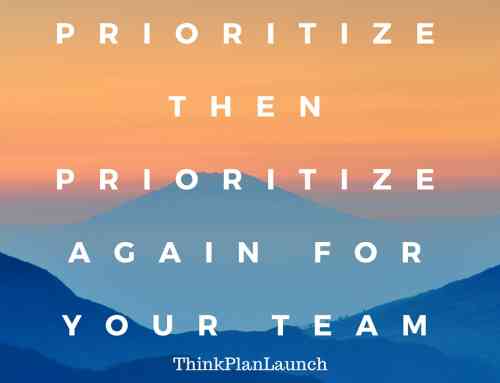Here is the situation. Your organization is growing rapidly and despite all the efforts to squeeze extra productivity out of the current workforce, you need to expand your capabilities and output. Building a new team from scratch is a monumental task full of challenges and unknown variables. There are many processes involved in building a team. There is planning, communication, systems and processes, hiring, onboarding, analyzing, and more.
The risk is high as multiple roles are being created and filled on a continual basis. Money is being burned by the minute while you scramble to devise a dream team of expert people who will take the organization to the next level. On top of this effort, is your ongoing role managing the current team and its tasks and objectives. It is no easy task but it offers rewards in experience and opportunities.
Table of Contents
Planning is everything
Before this dream team roster is drafted on paper, there needs to be an extensive, meticulous planning phase which must be thorough, accurate, validated, and revised. One small mistake here will cause a lot of waste and potentially your opportunity to show success. At the same time, moving too slowly will waste opportunity as well. The best course, which is always in hindsight, is to start planning well in advance. Of course, not everyone has the luxury of spending extra time on planning when there are so many unknown factors in an organization’s future. But there are some that have a well thought out strategy and can anticipate future needs.
The planning phase of recruiting and building a new team involve identifying the following:
- The current and future needs of the organization according to its strategy and vision
- The current strengths and weaknesses of the team
- Competitive advantages to be gained
- Future industry trends and technologies that will replace soon-to-be outdated practices
Identifying needs is a must. There is no room for wants or hopes in building a new team. Not only will resources such as cash be stretched when an organization grows, but its time as well. Every new person added to an organization will increase its efforts in communication, logistics, and operations. Nonessential roles must be eliminated during the growth phase.
Evaluating the strengths and weaknesses of the organization will help a new team fill in the gaps and double down on areas that produce results. Not only can a new team have a higher ROI than the current team, but they can bolster the organization in areas that are potentially dangerous. There are many areas that are underserved in a current organization. Sometimes it’s legal, technical, operational, or knowledge related. Building a new team can affect these areas.
The competition is always getting bigger, stronger, and more influential. Your new team has the ability to deal with the competition by adding new value to your products or services. Understanding what it takes to gain this advantage and planning for it will prove highly valuable and can push a company towards its tipping point.
Every industry is constantly changing in some way. The most popular example is probably the newspaper business. Some of the giants have been around for hundreds of years with no cause for concern. The internet quickly brought these giants to their knees with online news services and even now these new players are facing other new forms of competition such as social media. Every organization is constantly under threat from technological advances, trends, and innovation. Building a new team has an opportunity to future-proof an organization by bringing in talent that is capable of pushing it forward with the times.
Defining the roles
With all the needs and objectives defined, it is then possible to create roles that will collectively meet these requirements and function as a team. There are usually several ways of accomplishing this, but one of those ways will be the best in terms of productivity and ROI. When considering which roles to establish you should consider:
- How will each role in the team complement each other?
- Who will manage each role and be responsible for planning and analysis?
- What potential problems exist within the team in the areas of communication and accountability?
- Which roles will experience too big or too small of a workload and how can the team be balanced?
With these concerns in mind a panel of people within the organization who are familiar with the needs of the team and organization can come together and contribute ideas to address the challenges. Roles can then be established, reviewed, analyzed and benchmarked. As mentioned before, there could be any number of combinations of roles to accomplish the needs, but one will prove superior in most cases with all things considered. The ROI must be considered holistically.
Building the system
A system will need to be devised to allow the team to function and communicate. All things must be considered down to the very details such as the placement of their desks in the office. This system will make or break the team. The more time devoted to building a strong system, the less time is wasted later trying to plug holes.
The first part of the system to consider is the communication protocol. Who communicates to who, how often, with what channels, and how effective will it be? Email? Issue-tracking software? Task lists? Waterfall charts? Scrum? And what about meetings? Are meetings a waste of time or essential? These must be considered first. It is not just a matter of what you want or are familiar with, but what your team can use effectively. There is no one-size fits all approach. Each team and organization will have different requirements and find different methods more effective. Also, who is reporting to who is another item to consider. Information needs to flow freely within the team in a nonthreatening environment. Performance needs to be assessed frequently and obstacles need to be discovered and removed. Communication needs to be effective and productive. Many organizations suffer from non-productive meetings, emails, and phone calls.
Workflow also becomes an essential part of the system. As a team works together on a common goal, components of a product or service pass through the team from development to production to going live or public and back again. How can a team function when there are multiple processes going on and each person is responsible for certain parts of the process? Luckily, if communication is strong, half the battle is already won. The rest is with making sure each step of the process is efficient and productive.
In software development, for example, there is the building of software, testing, releasing, marketing, and customer service among other things. The way that a team functions around this process is a combination of research, planning, analysis, and communication simultaneously in cycles and iterations. Other organizations sometimes deal with sales, marketing, fulfilment, and production, also simultaneously. It’s somewhat similar to a big factory line where people specializing in certain areas are working on the same product.
It takes a lot of planning and analysis to get a team at its peak performance, but without this effort, a team will have a low ROI.
Hiring the team
When the roles are defined, the communication protocol is determined and the system is in place, the firing process can begin. Depending on the size of the team, it could take many months to fill in each position.
The order of hiring for each role will need to be efficient to reduce wasted time and resources. Often organizations will benefit from hiring from the top down. The reason is those at the top will take longer to be onboarded and they often must be prepared in advanced before they can manage others. This approach is common, but not always the most effective. There are a lot of roles in a team and certain roles that are more independent or critical to the company will also need to be considered for the first round of hiring.
It is often said that it is better to interview hundreds of people to find the right person for the role. While this is often the ideal case, not many small to medium sized organizations have the luxury to wait a year to hire someone. A lot this wasted time can be reduced from having a good job benchmarking process in place, assessing candidates beyond experience and skills, and having a good onboarding process in place for their eventual hire.
Onboarding the new hires
The war isn’t finished once the right candidates are hired for the job. Onboarding is a critical step in building the team. Done right, the team will hit the ground running. Done wrong, the team will crash and burn before it can even start.
The essentials will need to be passed on to every hire:
- The vision and strategy of the organization and the team
- The goals and objectives of the organization and the team
- Essential information and processes
- Communication protocols
- Training of tools and software
- Performance tracking
Beyond these essentials comes some other important tasks. The team must become more than just a collection of people. It must become a singular entity capable of moving at a fast pace, changing direction rapidly, and adapting to new situations and requirements. New team members will face the usual distractions and performance detractors such as office politics, bad teammates, a breakdown of communication, harassment, bad days, etc…
To ensure that each team member is able to do their part, encouraging the team to become familiar with each other is a good strategy. The culture of the organization must be alive and breathing within the team. The most effective teams are the ones where members form bonds of trust with each other and confidence in meeting goals. Getting the team together after hours, having lunches together, doing icebreakers, and initiating new members become great ways to enhance a team’s performance.
While it is natural for some teams to develop their own bonds, a good leader and manager can speed up the process. Efforts towards creating harmony in the team will go a long ways. Consider the champion sports teams and how they function. Wouldn’t you want your team to be as close and high performing as theirs?
Performance tracking
As a new team embarks on its mission, the performance of its activities will need to be constantly monitored, analyzed, and scrutinized. While it would be hopeful to think that your new team is perfect in every way, there are certainly adjustments to make at a minimum. Each area will need constant evaluation with the participation of every team member.
Communication is a good place to start as it is what makes a team functional together. There are always holes to plug in when it comes to communicating information. Ensuring that the communication protocols are sufficient and are being followed is a first step towards evaluating the system. If all the processes are working correctly, and there are still problems, than the process itself needs some tweaking. Communication should be continually evaluated, assessed, and updated.
The system can then be evaluated as well. Where is there room for improvement? What areas are bottlenecks? What needs to be rethought? The system is never perfect and advances in technology and trends make the system a constantly evolving organism.
Hiring and onboarding also become areas of interest for making improvements. Some roles might be so effective, a duplicate role can be added. Some roles might be less effective and the role must be rethought. Also, what indicators of success found during performance tacking can be included in the hiring process?
Lastly, the individual for each role must be tracked for performance. This is a mandatory check that will be considered along with the other areas. While it would be nice to accommodate the system or communication process to fit everyone, there is often a need to communicate with individuals in different ways.
No matter what needs a team must fulfill, building the right team is challenging but important for an organization. Following the right steps will ensure that a team will be effective. The team and its protocols are never a one-time thought, but a constantly evolving creature that is moving towards perfection.




Leave A Comment